In recent years, technological advancements have revolutionized nearly every industry, and villa construction is no exception. These innovations are not just about fancy gadgets—they’re changing the way villas are designed, built, and maintained, creating more efficient, durable, and eco-friendly homes. From smart building systems that optimize energy use to digital project management tools that improve collaboration, technology is transforming the construction landscape. For property developers and villa owners, keeping pace with these advancements is crucial to creating modern, sustainable villas that are not only beautiful but also stand the test of time.
In this article, we’ll delve into the key technologies shaping modern villa construction, including 3D modeling, automation, and sustainable materials. By integrating these innovations, developers can ensure superior construction quality while minimizing both costs and environmental impact. Whether you’re planning to build a luxury villa or improve an existing property, understanding how technology enhances the construction process is the first step toward a successful, future-proof project.
3D Modeling and Building Information Modeling (BIM)
One of the most significant advances in modern villa construction is the use of 3D modeling and Building Information Modeling (BIM). These tools revolutionize the design process by providing detailed, interactive representations of a project before construction even begins.
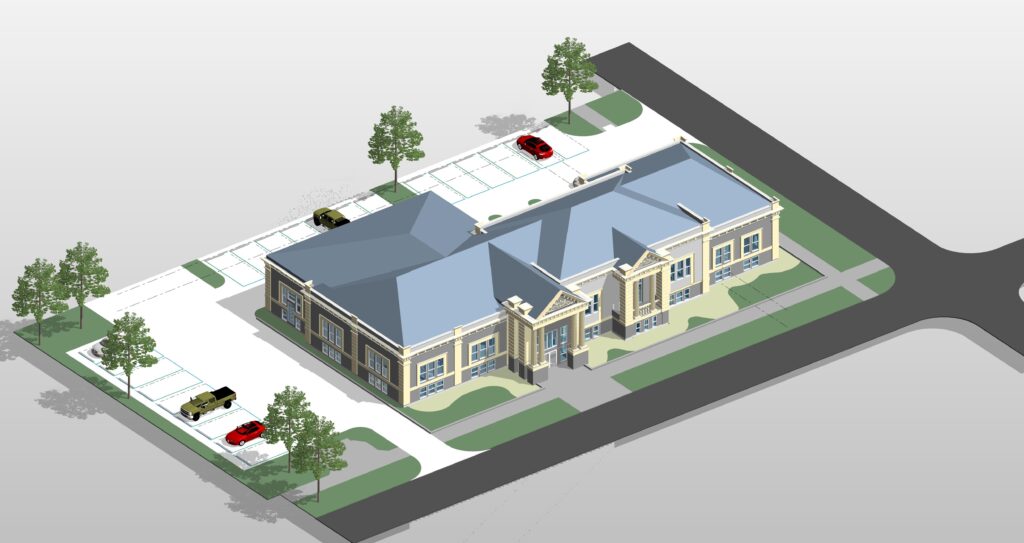
Visualizing Designs with 3D Models
3D modeling software allows architects, engineers, and developers to create lifelike renderings of a villa, enabling clients to visualize their future home in exact detail. This technology helps prevent misunderstandings and design changes later in the process, saving both time and money. With accurate 3D models, homeowners can explore different layouts, materials, and design options, making informed decisions about the villa’s final look and feel.
By using 3D models, developers can also simulate how the villa will interact with its environment. This includes considering the impact of natural light, airflow, and the overall landscape, ensuring the villa blends seamlessly with its surroundings. These visual simulations give property owners a real-time, immersive experience, allowing them to explore the structure before a single brick is laid.
Enhanced Collaboration with BIM
Building Information Modeling (BIM) takes 3D modeling a step further by incorporating all the critical data about the project into a single platform. BIM is a collaborative tool that provides real-time updates and allows architects, engineers, and contractors to work together efficiently. This integration of all construction elements—ranging from structural design to electrical and plumbing systems—ensures that any changes or updates are reflected across all plans instantly.
With BIM, construction teams can anticipate potential issues, optimize project scheduling, and reduce material waste. For example, if an architect changes the position of a wall, BIM will automatically update the corresponding electrical and plumbing systems, preventing costly errors. By integrating all phases of the construction process, BIM technology helps streamline villa construction, resulting in fewer delays and higher-quality builds.
This collaborative approach not only enhances communication between stakeholders but also ensures that the project runs smoothly from design to completion, maximizing efficiency and quality.
Smart Building Systems and Automation
In modern villa construction, smart building systems are becoming a must-have feature. These systems incorporate automated technologies that enhance energy efficiency, security, and convenience for villa owners.
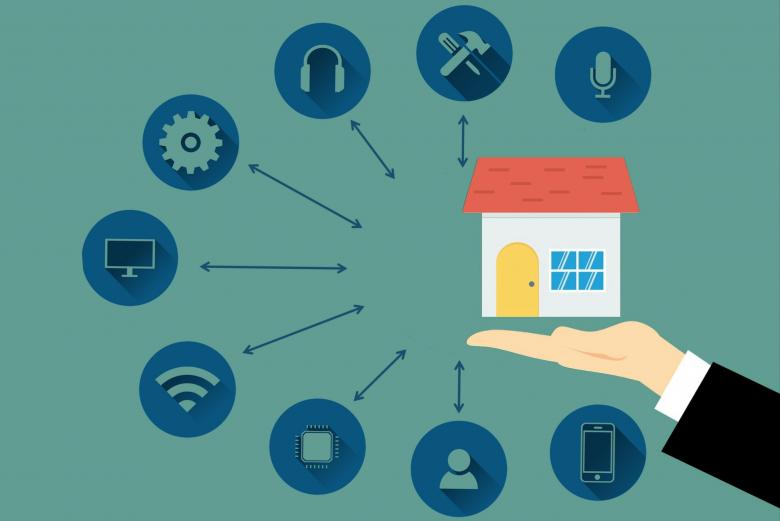
Energy-Efficient Homes with Smart Systems
Smart home automation allows villa owners to control various systems, including lighting, heating, and cooling, through centralized platforms. For instance, smart thermostats can optimize energy use by adjusting temperatures based on occupancy or external weather conditions. This leads to substantial energy savings and reduces the villa’s overall carbon footprint.
In tropical climates like Koh Samui, where temperatures can fluctuate dramatically, smart HVAC systems can ensure that the villa stays comfortable without unnecessary energy consumption. For example, a smart thermostat can pre-cool the villa in the afternoon based on weather forecasts or shut off cooling in rooms that are not in use. This level of control not only improves the comfort of the home but also results in significant cost savings on energy bills.
Moreover, integrating solar panel systems with smart monitoring tools allows homeowners to track their energy production and usage, helping them maximize their reliance on renewable sources. These tools can send real-time data about energy generation and consumption, ensuring that homeowners are always optimizing their energy efficiency. As a result, villas equipped with smart energy systems are more sustainable and cost-efficient in the long term.
Enhanced Security and Automation
Beyond energy management, smart systems play a crucial role in improving security. Smart surveillance cameras, motion detectors, and automated door locks provide villa owners with peace of mind by ensuring that their properties are secure. These systems can be controlled remotely through smartphone apps, allowing owners to monitor their villa and receive alerts in real time, regardless of where they are.
For instance, smart security cameras can detect unusual activity and send notifications directly to the owner’s phone. Automated door locks can be controlled remotely, so homeowners can lock or unlock their doors without needing to be on-site. This level of control makes it easier to manage the security of the property, especially for owners who do not live on-site full-time.
Automation also extends to home management, with systems that handle everything from irrigation to lighting schedules. For example, smart irrigation systems can adjust watering schedules based on weather conditions, ensuring that gardens are only watered when necessary, which conserves water and keeps landscaping lush. Automated lighting systems can adjust indoor and outdoor lighting according to the time of day, enhancing both energy efficiency and ambiance. By automating these everyday tasks, villa owners can maintain their properties effortlessly, ensuring both security and efficiency while they focus on other priorities.
Sustainable Building Materials and Green Technology
Sustainability is a growing priority in villa construction, and new technologies are enabling greener building practices that reduce environmental impact.
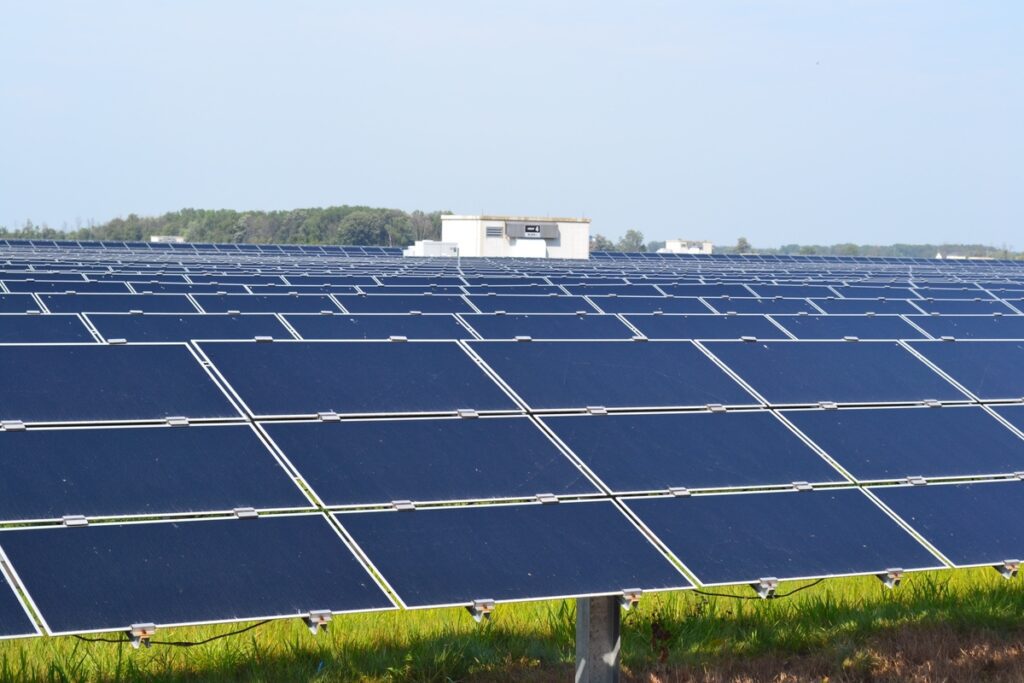
Eco-Friendly Materials for Modern Villas
Using sustainable materials is one of the most effective ways to lower the carbon footprint of a construction project. Recycled materials like reclaimed wood, recycled concrete, and eco-friendly insulation made from plant fibers are excellent alternatives to traditional building materials. These materials offer the same durability while being far less harmful to the environment. Reclaimed wood, for example, not only reduces the demand for new lumber but also adds character and warmth to modern villas with its unique textures and colors.
In addition to using recycled materials, green building technologies like green roofs and solar panels further improve the energy efficiency of villas. Green roofs provide natural insulation, reducing the need for artificial heating and cooling by regulating indoor temperatures. This design also helps reduce stormwater runoff, preventing flooding during heavy rains and minimizing the impact on local drainage systems. Meanwhile, solar panels harness renewable energy from the sun, providing clean power that significantly reduces electricity costs and lowers reliance on non-renewable energy sources.
Together, these eco-friendly materials and technologies create villas that are both sustainable and energy-efficient, which not only benefits the environment but also enhances the overall quality and comfort of the home.
Water Conservation Technologies
In addition to sustainable materials, water conservation technology is becoming a staple in modern villa construction. Water conservation is critical in regions where water resources are limited, and integrating systems that optimize water use is essential for sustainable living.
Rainwater harvesting systems allow villas to capture and store rainwater, which can be used for a variety of purposes, such as irrigation or flushing toilets, reducing dependence on the municipal water supply. Greywater recycling systems further enhance water efficiency by filtering and reusing wastewater from showers, sinks, and washing machines for non-potable uses like landscaping. These innovations reduce overall water consumption, making the villa more self-sufficient and environmentally responsible.
Low-flow fixtures, such as low-flow faucets, showerheads, and toilets, are also becoming standard in eco-friendly villa design. These fixtures use less water while maintaining the same level of functionality, helping to conserve water without sacrificing convenience. Additionally, smart irrigation systems automatically adjust watering schedules based on weather conditions, ensuring that outdoor spaces are only watered when necessary, preventing overuse and wastage.
By incorporating these water conservation technologies, modern villas can significantly reduce their environmental impact, align with global sustainability goals, and offer long-term savings for their owners. This makes water-efficient systems a valuable addition to any modern villa, particularly in regions where natural water resources are limited or costly.
Prefabrication and Modular Construction
Technological innovations have also streamlined the construction process itself. Prefabrication and modular construction techniques are becoming more common, allowing for faster builds without compromising quality.
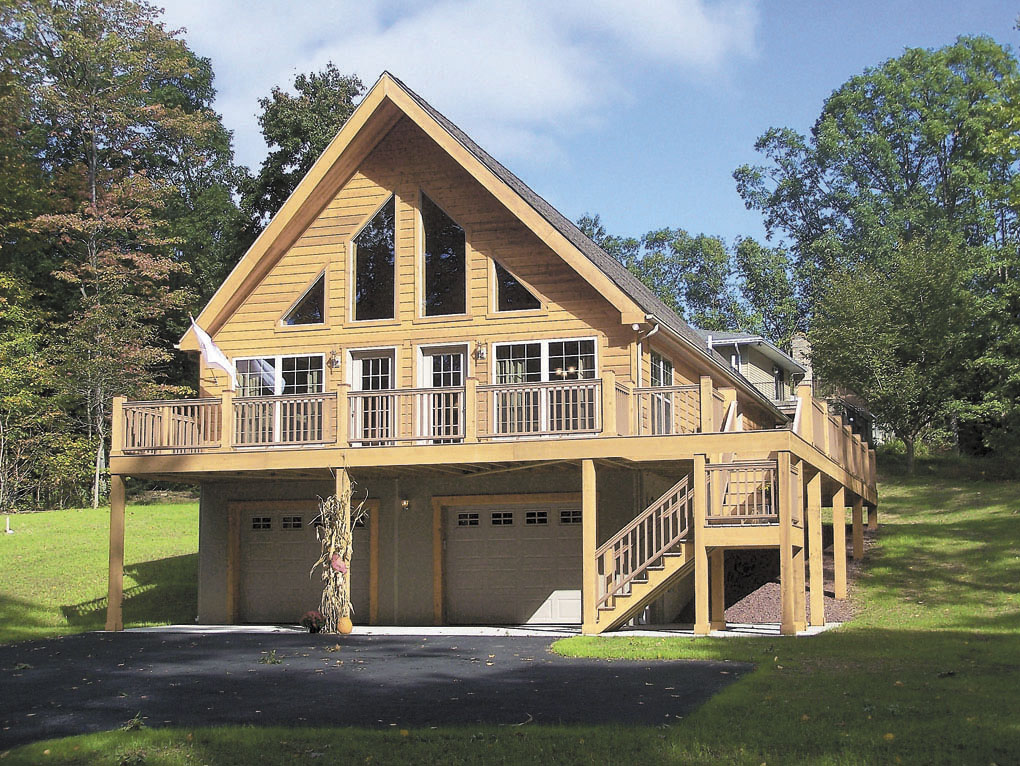
Speeding Up the Construction Process
In traditional construction, everything is built on-site from scratch, leading to potential delays due to weather, labor shortages, or supply chain issues. Prefabrication involves constructing components of the villa off-site in controlled environments, then transporting them to the construction site for final assembly. This method drastically reduces construction time while ensuring precision and accuracy during the building process.
Modular construction takes this idea a step further by building entire sections or “modules” of the villa in factories, which are then transported and assembled on-site. This approach is particularly useful for complex architectural designs or when there are tight time constraints. Since much of the work is completed off-site, the on-site assembly process can be completed faster, reducing project timelines and the potential for costly delays.
By using prefabrication and modular techniques, developers can not only speed up the construction process but also reduce waste and enhance productivity, leading to a more efficient and predictable building schedule.
Improved Quality Control
Because prefabricated components are constructed in highly controlled factory environments, the risk of defects is minimized. Factors like weather, inconsistent labor quality, and site-specific challenges often cause variations in traditional builds, but with prefabrication, each component is manufactured to exact specifications under ideal conditions. This results in superior quality control and fewer surprises during the construction process.
In prefabricated construction, precision is paramount, as each piece must fit perfectly during the final on-site assembly. This allows for higher-quality finishes and ensures that the completed villa meets design expectations, providing greater peace of mind for villa owners and developers alike. The consistency and attention to detail afforded by modular construction make it an attractive option for those seeking a high standard of craftsmanship while reducing the time and stress typically associated with traditional construction methods.
Drones and Robotics in Construction
Advances in drones and robotics are revolutionizing villa construction, enhancing site management, safety, and precision. These technologies allow developers to streamline operations while maintaining the highest levels of quality and efficiency.
Drones for Site Surveys and Monitoring
Drones are becoming invaluable tools for surveying construction sites, providing real-time aerial footage that allows contractors and architects to monitor progress, inspect hard-to-reach areas, and ensure that safety protocols are being followed. By flying over the construction site, drones can capture comprehensive views of the terrain, helping designers make informed decisions about the villa’s layout and placement. This technology is particularly useful in remote villa projects, where accessing the site might be challenging.
Drones can also map the land before the first brick is laid, providing critical data for site assessments and design adjustments. During construction, they keep stakeholders updated by delivering regular visual progress reports, which minimizes the need for frequent site visits. This level of transparency not only improves project oversight but also fosters better collaboration among all parties involved.
Robotics for Precision and Efficiency
The introduction of robotics in construction is transforming how villas are built, particularly in tasks requiring extreme precision and those that are labor-intensive. For example, robotic arms are increasingly used in bricklaying, ensuring each brick is placed with perfect uniformity, reducing human error and accelerating the process. These robots can work continuously, without breaks, leading to faster completion times.
In addition to bricklaying, automated machinery is being utilized for complex tasks such as welding, plastering, and even heavy lifting. This not only reduces the risk of injuries on-site but also improves consistency in the quality of construction. Robotic systems can handle intricate and repetitive tasks with high levels of accuracy, which translates to fewer mistakes and less waste.
The efficiency that robotics bring to villa construction ultimately cuts down on labor costs, enhances the quality of the finished structure, and speeds up the overall project timeline. As these technologies become more prevalent, villa construction will continue to see improvements in both cost-effectiveness and build quality.
Virtual Reality (VR) and Augmented Reality (AR)
Virtual Reality (VR) and Augmented Reality (AR) are revolutionizing villa construction by offering immersive and interactive experiences for both clients and builders. These technologies provide a clearer vision of the project, ensuring that the villa design meets expectations and that construction is executed with precision.
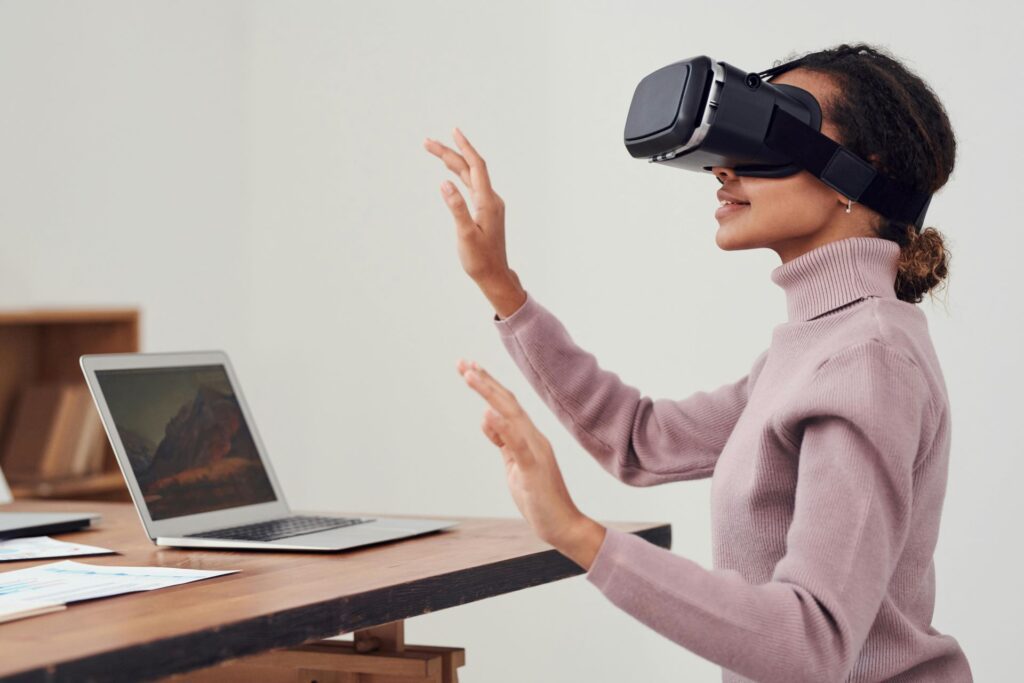
VR for Immersive Design Experiences
With Virtual Reality, villa owners can take a virtual tour of their future home before a single brick is laid. By using a VR headset, clients can navigate through the villa’s various spaces, explore different layout options, and experiment with materials, colors, and furnishings in real-time. This technology allows for a full, immersive experience, helping homeowners make better decisions about the design elements that will shape their villa.
For instance, they can walk from the living room to the kitchen, open doors, or view different lighting conditions, all while making adjustments that will directly affect the final build. VR enables clients to envision their dream home in a tangible way, minimizing design errors and reducing costly changes during construction. This level of interaction also creates greater confidence in the final product, as clients can see exactly what they are investing in before the project even begins.
AR for On-Site Construction Assistance
Augmented Reality (AR) offers real-time construction support by overlaying digital building plans onto the physical construction site. Using AR-enabled devices, such as smartphones or tablets, construction teams can view virtual elements—such as walls, electrical wiring, and plumbing—superimposed onto the real world. This allows workers to see exactly where each component needs to be placed, ensuring precision and minimizing mistakes.
AR helps reduce miscommunication between architects, contractors, and construction teams, as everyone can visualize the project’s progress and identify potential design conflicts before they occur. This real-time collaboration speeds up the decision-making process and improves the overall efficiency of villa construction.
Heveatecture’s Approach to Integrating Technology in Villa Construction
At Heveatecture, we believe that innovation and sustainability should go hand in hand. By embracing the latest construction technologies, we ensure that every villa we design and build offers both modern conveniences and long-lasting quality. Our commitment to excellence is reflected in how we integrate advanced tools and materials into our projects, while also staying true to eco-friendly practices.
Smart Solutions for Modern Living
We understand that villa owners today expect their homes to offer more than just beautiful architecture—they seek efficiency, comfort, and control. That’s why Heveatecture incorporates smart building systems into our villa designs. These systems allow homeowners to manage their property’s lighting, temperature, and security with ease, often from their smartphone or tablet, whether they are on-site or halfway across the world. Our use of energy-efficient technologies helps reduce utility costs while ensuring that the villa remains comfortable throughout the year, regardless of the tropical climate.
High-Precision Construction with Advanced Tools
By leveraging tools like Building Information Modeling (BIM) and 3D modeling, we provide our clients with a clear vision of their villa before construction even begins. At Heveatecture, we use these technologies to streamline the design and construction process, ensuring that every detail aligns perfectly with our clients’ vision. Additionally, with drone technology and site surveillance, we offer real-time project monitoring, which allows us to provide transparent progress updates and keep our clients involved at every step of the build, no matter where they are located.
Combining cutting-edge building technology with a deep respect for the environment, Heveatecture creates villas that are not only visually stunning but also equipped to meet the needs of modern living.
Conclusion
The integration of technology into modern villa construction has redefined how villas are designed, built, and managed. Tools such as BIM, 3D modeling, smart home automation, and drones are making construction more efficient, while VR and AR provide immersive design experiences and precise construction assistance. These innovations not only improve the quality of villas but also reduce costs, timeframes, and environmental impact.
As villa developers continue to adopt these technologies, property owners will benefit from more streamlined, sustainable, and high-quality builds that meet the growing demand for energy-efficient, luxury homes.
FAQ
Building Information Modeling (BIM) is a digital tool that integrates all aspects of a construction project, allowing architects, engineers, and contractors to collaborate in real-time. It streamlines the design and building process.
Smart systems, such as automated thermostats and solar panel monitoring, optimize energy use by adjusting temperatures and lighting based on occupancy or external weather conditions, reducing energy consumption.
Drones provide real-time aerial footage for site surveys, allowing for better monitoring of construction progress, inspecting hard-to-reach areas, and improving site safety. They also offer precise data for terrain mapping and project planning.
3D modeling enables architects and homeowners to visualize the villa before construction, providing detailed, lifelike representations of the space. This helps in making informed design choices and anticipating any potential issues.
Prefabrication involves building components off-site in a controlled environment and then transporting them to the construction site for assembly. This reduces construction time and ensures consistent quality.
Sustainability is crucial in villa construction, with eco-friendly materials like reclaimed wood and energy-efficient systems like solar panels and water conservation technologies being widely used to reduce the environmental impact.
Smart lighting allows homeowners to control lighting remotely, schedule lights based on occupancy, and use energy-efficient LED bulbs. It enhances convenience, security, and energy savings.
Robots can perform tasks with extreme precision, such as bricklaying, welding, or heavy lifting. This minimizes human error, increases productivity, and ensures uniformity in construction quality.
Virtual Reality (VR) provides an immersive experience, allowing homeowners to “walk through” their villa before it’s built. It helps in making design decisions and provides a clear understanding of the final product.
Augmented Reality (AR) overlays digital designs onto the physical construction site, helping workers visualize where walls, utilities, and fixtures should go. This reduces errors and improves accuracy during the building process.
